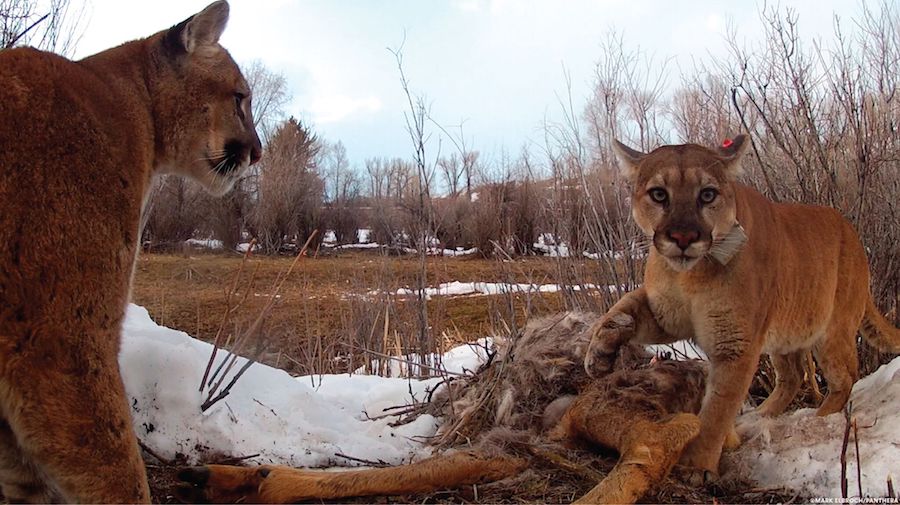
Mountain lions have more complex social relationships than previously thought
Mountain lions have been known to be solitary creatures. Aside from a mother raising her young cubs, these big cats do not interact unless they want to mate or fight. However, this common knowledge may not be true at all.
Pumas, cougars and mountain lions are all the same species: Puma concolor. Known for their ability to take down large prey, mountain lions tend to not show themselves around humans. New technology has made this elusive cat easier to study, and mountain lions have a lot to show us.
A combination of GPS collars, motion triggered cameras, blood samples and analysis shows that mountain lions tolerate and share food with each other. Even more surprising, mountain lions usually share their kills with unrelated mountain lions.
“This is the first evidence of sociability in what people thought were solitary animals,” said Mark Lubell, a professor in the Department of Environmental Science and Policy at UC Davis.
Although never having worked with mountain lions before, Lubell co-authored a paper about mountain lions’ complex social lives. He advised on what data to get, looked at videos and analyzed patterns made by the mountain lions.
“I did the boring part,” Lubell said.
His analysis proves that, in the population of mountain lions studied in Wyoming, the interactions that the big cats made were not random.
Dr. Mark Elbroch, a lead scientist at Panthera, an organization dedicated to studying and protecting big cats, did most of the field work.
“He’s the Indiana Jones of field biology,” Lubell said.
To gather data, Elbroch would watch mountain lions with GPS collars on his laptop. When one would stay in the same area for four hours, Elbroch would go and investigate. If he found a kill site, an area where a mountain lion was eating its freshly killed prey, Elbroch would set up a motion-triggered camera.
In 2008, he first had the ability to visit a kill site while the mountain lions were still there. The advance in technology, especially GPS collars, allowed him to track the animals in real time. The cats would slip away while Elbroch set up the cameras, then return as soon as he left.
“They [mountain lions] want nothing to do with you,” Elbroch said, “I’m terrified of bobcats. Mountain lions don’t care.”
Elbroch’s initial study was concerned with how much mountain lions were eating and how much scavengers were mooching off the big cats. These cameras showed up to 39 different species feeding off mountain lions kills.
“I started to see things that didn’t make sense,” Elbroch said.
Mountain lions were not supposed to be social, but Elbroch kept seeing GPS-tracked mountain lions in close proximity. Even more shocking, he saw a video of two unrelated males sharing food. This started the study about mountain lions having social relationships.
To determine if mountain lions typically share food with their relatives, blood samples were taken at the beginning of the study while Elbroch collared the mountain lions. Dr. Anthony Caragiulo, the assistant director of Genomic Operations of Sackler Institute, then ran genetic tests on the blood samples.
Kinship, or relatedness between mountain lion individuals, could not explain the food-sharing habits. Female mountain lions were more likely to tolerate other mountain lions, while males seemed to benefit more from the interactions.
“There are other things we probably couldn’t measure,” Caragiulo said. “This was with resources we could measure.”
For future research, Lubell and Elbroch want to explore other mountain lion populations. Although a total of 16 mountain lions were collared, an estimated 85 percent of the population in that area, mountain lions usually live in more densely populated areas. To see if meal sharing is widespread, more studies need to be done with mountain lions.
“It’s doesn’t surprise me there is some sort of cooperation,” Caragiulo said. “It wouldn’t surprise me if it was found with other animals thought to be solitary.”
Written by: Rachel Paul — science@theaggie.org
Editor’s note: An earlier version of this article misstated that the name of the lead scientist and Panthera was Mark Elboch. It is Mark Elbroch. The article has been updated to reflect this correction.



